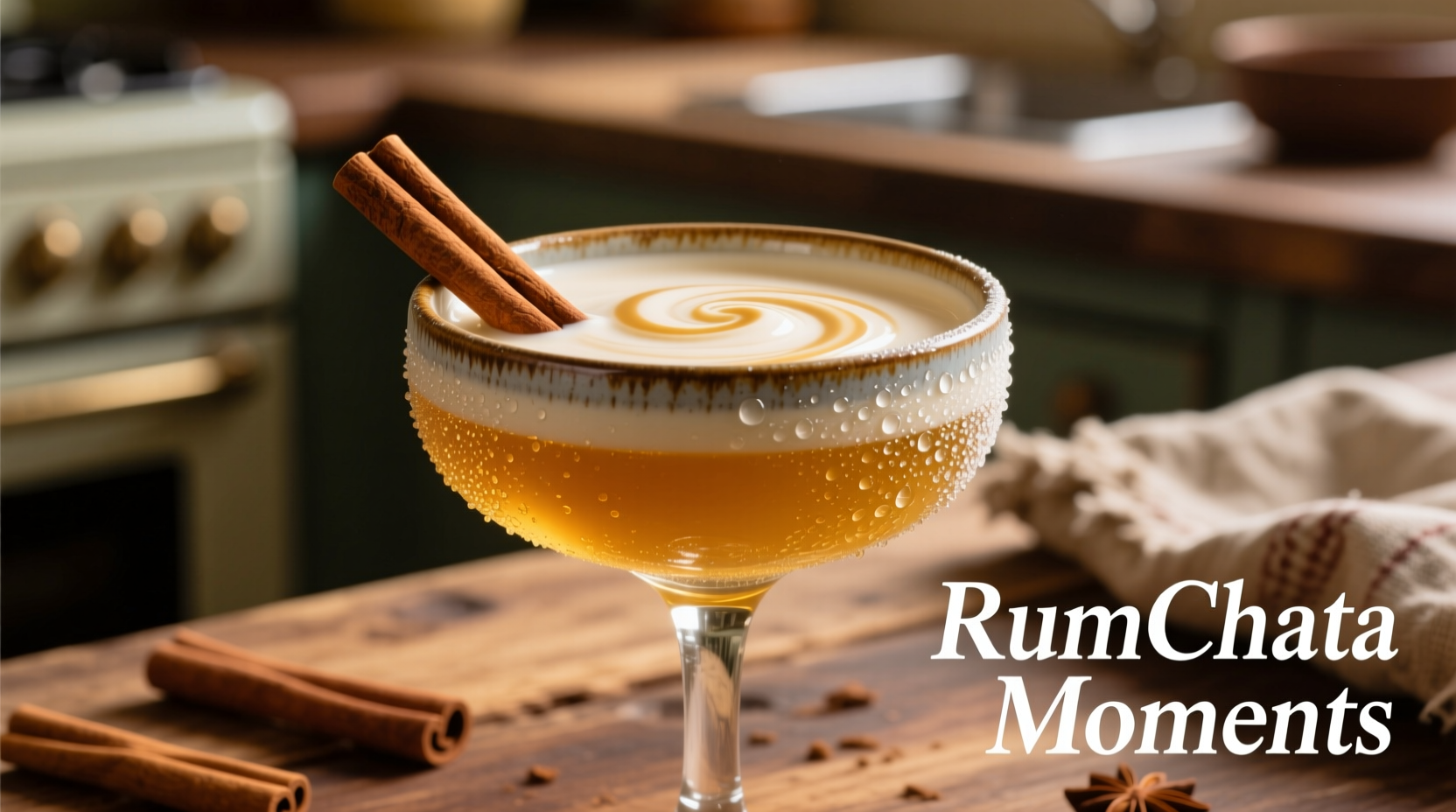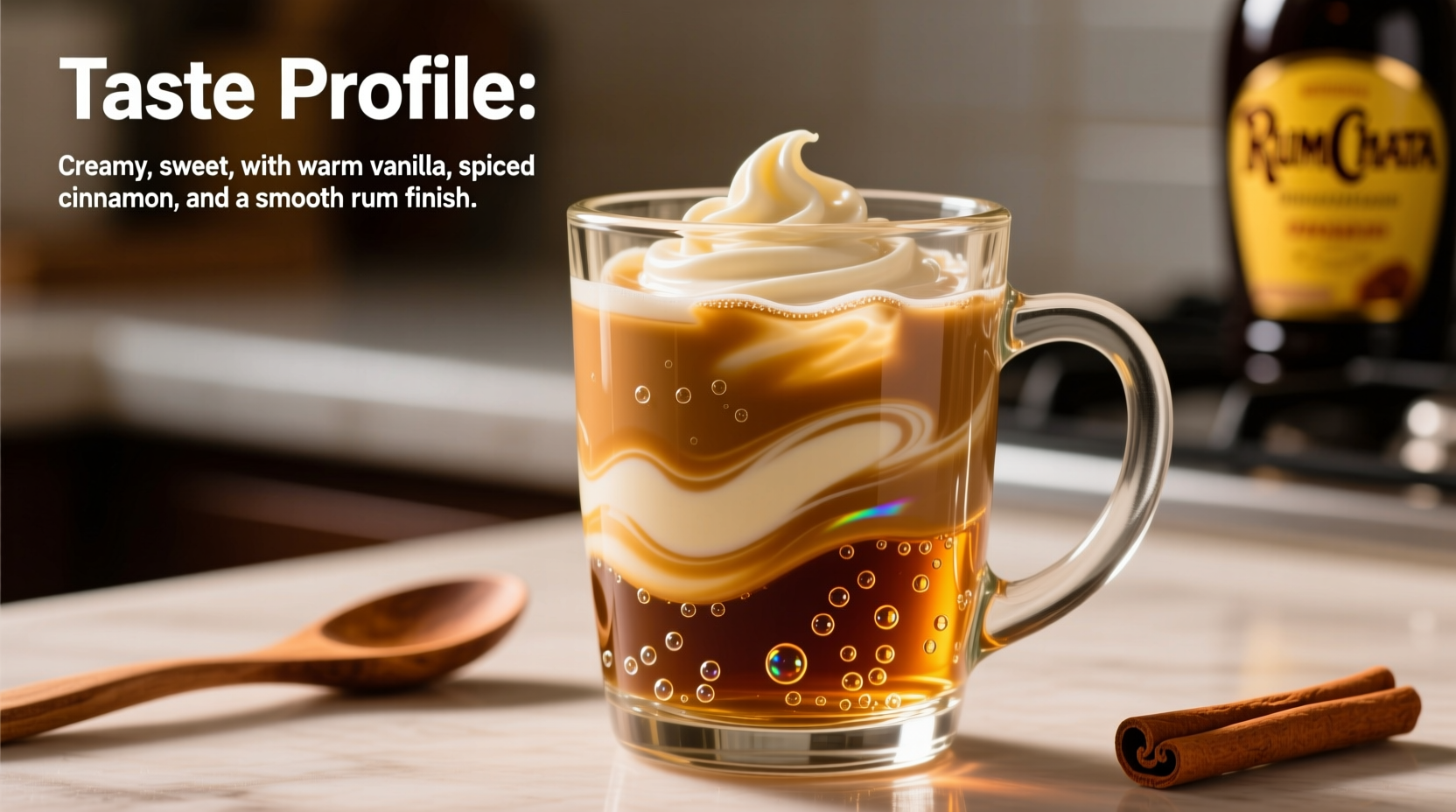Your First Sip: What to Expect When Tasting RumChata
When you take your first taste of RumChata, you'll immediately notice its rich, velvety texture. The initial sensation is a wave of creamy sweetness followed by distinct cinnamon notes that warm the palate without overwhelming heat. Unlike traditional cream liqueurs, RumChata delivers a complex flavor journey: the smooth Caribbean rum base emerges after the initial sweetness, complemented by subtle vanilla undertones and a hint of nutmeg. The finish is pleasantly warm but not harsh, with the dairy cream creating a smooth mouthfeel that lingers just long enough to invite another sip.

Breaking Down RumChata's Flavor Components
Understanding what gives RumChata its distinctive taste requires examining its carefully balanced ingredients:
- Rum foundation: Made with five-fold distilled Caribbean rum, providing a clean alcohol base that doesn't overpower
- Dairy cream: Real dairy (not coconut milk like traditional horchata) creates that signature creamy texture
- Cinnamon: The dominant spice note, but carefully calibrated to be warm rather than spicy
- Vanilla: Adds depth and balances the cinnamon's intensity
- Supporting spices: Subtle nutmeg and other spices create complexity without being identifiable
- Sweetness level: Approximately 25g of sugar per 100ml, making it sweet but not cloying
How Temperature Changes RumChata's Flavor Profile
One critical factor many consumers overlook is how serving temperature dramatically affects RumChata's taste experience. According to sensory analysis principles that professional mixologists apply, temperature directly impacts flavor perception:
- Chilled (32-40°F/0-4°C): Served straight from the refrigerator, the creaminess intensifies while alcohol notes recede, making it taste more like dessert
- Room temperature: Allows more rum character to emerge, with spices becoming more pronounced
- Over ice: Dilution slightly reduces sweetness while maintaining spice notes, creating a more balanced profile
- Heated (in coffee): Heat releases additional aromatic compounds, enhancing cinnamon notes while mellowing the alcohol sensation
| Product | Base Alcohol | Primary Flavor Notes | Sweetness Level | Unique Characteristics |
|---|---|---|---|---|
| RumChata | Caribbean rum | Cinnamon, vanilla, creamy | High | Real dairy cream, horchata-inspired |
| Baileys Irish Cream | Irish whiskey | Chocolate, coffee, vanilla | High | Cocoa notes, whiskey warmth |
| Traditional Horchata | Non-alcoholic | Rice, cinnamon, nutty | Medium-High | Rice or nut base, no dairy |
RumChata in Different Applications: How Taste Transforms
The versatility of RumChata means its flavor profile changes significantly depending on how you consume it. Professional bartenders note these key differences:
Neat or Chilled
Served straight from the refrigerator, RumChata delivers maximum creaminess with subdued alcohol notes. The cold temperature enhances the dairy components while slightly muting the spice profile, making it taste more like a dessert than a liqueur. This serving method highlights why many consumers describe it as “cinnamon roll in a glass.”
In Coffee or Hot Beverages
When added to hot coffee (approximately 1:4 ratio), RumChata transforms completely. The heat releases additional aromatic compounds from the cinnamon while the coffee's bitterness balances the sweetness. Food scientists note that the Maillard reaction between the coffee and RumChata's sugars creates new flavor compounds, resulting in a taste reminiscent of cinnamon coffee cake.
In Cocktails
Mixed in cocktails like the popular “Horchata Colada” (with pineapple juice and coconut cream), RumChata's cinnamon notes complement tropical flavors while the rum base provides structure. In chocolate-based cocktails, it creates a unique cinnamon-chocolate-rum fusion that differs significantly from Baileys' chocolate profile.
Who Typically Loves (or Dislikes) RumChata's Flavor
Consumer taste preference studies show distinct patterns in who enjoys RumChata's profile:
- Lovers of sweet spice profiles: Those who enjoy chai tea, pumpkin spice, or Mexican hot chocolate typically appreciate RumChata's cinnamon-forward profile
- Cream liqueur enthusiasts: Fans of Baileys who want something with more pronounced spice notes
- Coffee drinkers: Particularly those who add cinnamon to their coffee
- Those who may dislike it: Purists who prefer unflavored spirits, people sensitive to sweet flavors, or those expecting traditional horchata's rice-based profile
Storage and Shelf Life: How Time Affects Flavor
Unlike many spirits, RumChata contains dairy, which affects both its shelf life and flavor evolution. According to food safety guidelines from the FDA, dairy-based liqueurs should be refrigerated after opening and consumed within 6-12 months. Over time, the following flavor changes may occur:
- Initial separation is normal (shake gently before use)
- Flavor intensifies slightly in the first few months after bottling
- After 6+ months, cinnamon notes may become more pronounced while creaminess diminishes
- Significant color change or sour smell indicates spoilage
Practical Tips for Best Flavor Experience
Based on professional tasting techniques, here's how to maximize your RumChata experience:
- Always shake well before serving (dairy components separate naturally)
- Chill for at least 2 hours for optimal creamy texture
- Use in coffee at a 1:4 ratio (1 part RumChata to 4 parts coffee) for balanced flavor
- Try with a light sprinkle of fresh cinnamon to enhance the spice notes
- Avoid boiling when used in cooking to preserve delicate flavor compounds











 浙公网安备
33010002000092号
浙公网安备
33010002000092号 浙B2-20120091-4
浙B2-20120091-4